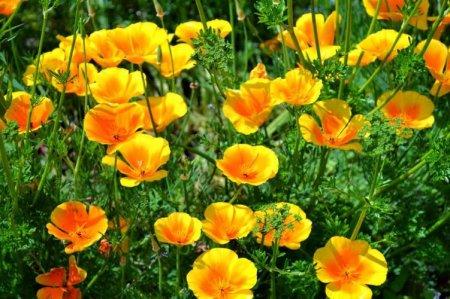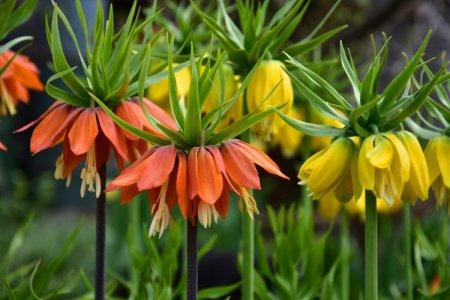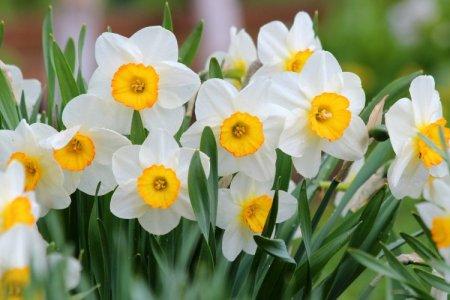
Enchanting forget-me-nots have been adored by poets and artists at all times. They were actively used in folk medicine, and now also in landscape design. In many countries of the world, unpretentious forget-me-nots successfully decorate the best city flower beds. Let's tell you more about them!
general information
Forget-me-not seems quite simple and unremarkable, but this is precisely its charm. Small flowers with blue petals and a yellow center are collected in elongated panicle inflorescences. The bushes themselves are very compact, up to 30 cm, so that they can be grown as ground cover plants.
In addition to blue forget-me-nots, there are sometimes white and pink varieties. The oblong pointed leaves of all shades of green on one stem look beautiful. Forget-me-nots even have fruits - tiny black nuts.
Forget-me-nots bloom in the second half of spring, and delight with their beauty for about 2 months. But in order for the flowering to last longer, you definitely need to take care of the shading of the plantings. To do this, they can be combined with decorative leafy moisture-loving plants. For example, with ferns.

Types of forget-me-nots
There are about 50 types of forget-me-nots in nature, which grow everywhere - from Africa and Australia to Siberia. And here are the varieties that are best to pay attention to in our latitudes!
Swamp forget-me-not
A moisture-loving species that prefers swampy areas and wet soils. In an ordinary garden, they may be a little dry, but they are great for decorating a pond.

Field forget-me-not
This variety is prized primarily for its wonderful medicinal properties. Field forget-me-nots are very small, with low shoots. They grow well even in the harsh regions of Siberia and the Urals.

Rough forget-me-not
A tiny perennial no more than 5 cm in height impresses with the splendor of flowering. Its small blue flowers are collected in dense and dense inflorescences. It is a good choice for rocky areas.

Forest forget-me-not
Under favorable conditions, it grows like a perennial and reproduces safely on its own. The height of the shoots is average - about 30 cm. The leaves are elongated, but rather oval, and the flowers are pastel blue.

Alpine forget-me-not
The mountain beauty loves bright light and is covered with blue flowers for 1.5 months. The stems are very tiny - from 5 cm, and the leaves seem to be covered with a silvery bloom.

Azores forget-me-not
Ground cover, but not the smallest species grows up to 20 cm. The Azores forget-me-not has a snow-white center and bright blue petals of a rather large size. There are blue and all white varieties.

Hybrid forget-me-not
This is a vast and varied category of breeding varieties, in which there are the most beautiful and unusual colors - from cream to purple. Often, hybrids are even more unpretentious than their wild ancestors.

Forget-me-not care
Forget-me-nots require almost no maintenance, so they can be safely planted and forgotten, despite the name. The most difficult thing is to choose the right place, but now we will tell you about everything!
Temperature
Forget-me-not is a heat-loving plant, so it blooms only at temperatures above +15 degrees. Otherwise, there are no special requirements, and perennial varieties are resistant to both heat and frost.

Lighting
Most forget-me-nots, except for some field and alpine varieties, prefer partial shade. It can bloom violently and actively even where other flowers are in dire need of light. Conversely, the more sun, the shorter the flowering.

Watering
Due to the fact that it grows in the shade, even a moisture-loving forget-me-not should not be watered too often. The earth should still have time to dry out at least a little.But on too hot and sunny days, increase the frequency of watering so that the leaves remain the same elastic and beautiful.

The soil
The soil should be moist and moderately nutritious. Soils that are too fertile and too poor are equally unsuitable. And be sure to loosen up the site and arrange good drainage.

Fertilizers and feeding
Fertilizers should not be overused, because forget-me-nots will grow, but not bloom. It is recommended to feed forget-me-nots with liquid complex mixtures three times: a couple of weeks after planting, in autumn and spring.

Thinning
As it overgrows, you can thin out the flower bed so that there is always at least 5 cm between the bushes. This is necessary due to the fact that forget-me-nots are quite sensitive to the fungus and at the same time hygrophilous. A too tight fit in wet conditions is a recipe for unwanted problems.

Wintering
Forget-me-not does not require any special worries for the winter. In the southern regions and the middle lane, it feels great on its own, it is enough to cut off the ground part. In the northern regions, you can, if you wish, cover the site with any covering material. Annual varieties are removed for the winter.

Planting and breeding
Forget-me-nots can be planted with seeds directly into open loose soil with peat and fertilizers. Gently sprinkle the planting material into small furrows with a distance of about 10 cm, and in a couple of weeks you will already admire the first shoots.
If you want to bloom as early as possible, plant the seedlings in late fall. The seeds are germinated in containers with light soil, good drainage and moderate moisture. They can be safely left in the shade.
After the leaves appear, dive small bushes and send them to a cool greenhouse until spring. Closer to spring, gradually accustom them to the warmth, and in the second half of April, transplant them into the garden.

Pest and disease control
The main diseases of forget-me-nots are downy and powdery mildew, which manifests itself in the form of a whitish bloom. The control methods are the same - reduce humidity and treat with fungicides. Watery gray spots, however, can be a symptom of rot, in which case all damaged parts of the plant must be removed first. And then the scheme is the same.
Forget-me-nots love to settle scoops, slugs, aphids and cabbage fleas. For prophylaxis, disinfection of the soil and planting material is needed even before planting. Avoid the proximity of forget-me-nots with crucifers. Inspect the flower bed regularly, and use insecticides immediately when pests appear.

Forget-me-nots - photo
Tiny forget-me-not flowers seem inconspicuous only to those who have never seen what luxurious flowering carpets it grows. Just look!


























